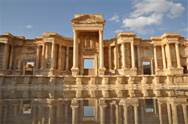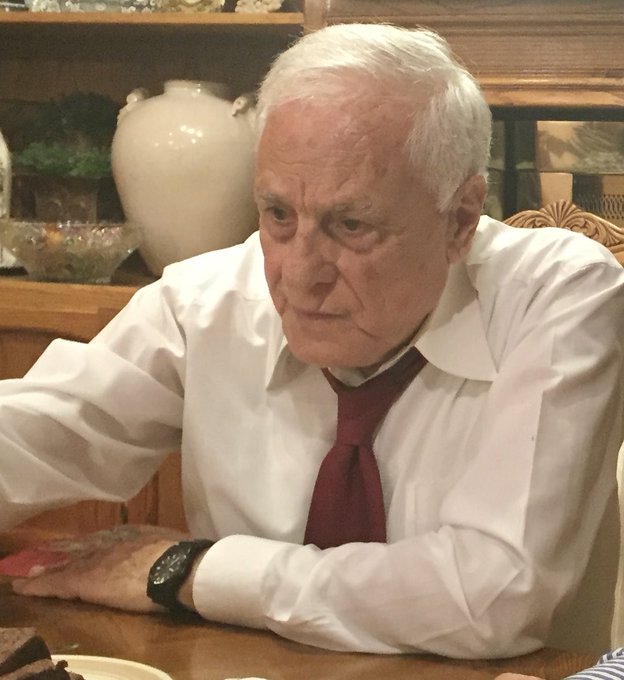
Iran justice chief rebuffs U.S. remarks on jailed marine
Tehran, AFP/Tuesday, 1 September 2015/Iran’s judiciary chief has urged the United States not to interfere in cases of detained Americans, days after US Secretary of State John Kerry said a jailed Marine should be freed. Ayatollah Sadegh Larijani’s remarks followed the fourth anniversary of Amir Hekmati’s imprisonment in Tehran on what Kerry called “false espionage charges.”Hekmati was visiting relatives in the Islamic republic when he was arrested. Larijani, quoted in Iranian media on Tuesday, said Iran examined legal cases “including those accused of spying for America, with absolute composure and dignity, based on duty and procedure. “The judiciary does not need American officials to write prescriptions for it,” Larijani said. “Our advice to them is not to hype (such matters) up uselessly.”In his remarks on Friday, Kerry called Hekmati’s detention “unjust” and also renewed his call for Iran to release two other Americans. Pastor Saeed Abedini was arrested in Iran in 2012 and sentenced to eight years in jail for gathering a group of people to study the Bible. Washington Post reporter Jason Rezaian, meanwhile, has gone on trial on spying charges and after more than a year in custody is awaiting sentencing. Kerry also urged Iran to “work cooperatively” to help locate Robert Levinson, a former FBI agent who disappeared while on Iran’s Kish island in 2007. Larijani said the judiciary would perform its duties, while interests of national security also provided for Iran’s Supreme National Security Council to have a say under the law. In some cases, the country’s supreme leader Ayatollah Ali Khamenei is authorized to issue a pardon, the judiciary chief added.
Iranian Guard chief says U.S. ‘still the Great Satan’
Tehran, Iran, AP/Tuesday, 1 September 2015/The head of Iran’s elite Revolutionary Guard said Tuesday that the U.S. is still the “Great Satan,” regardless of the nuclear deal struck with Americans and world powers over the Islamic Republic’s contested nuclear program. The comments by Gen. Mohammad Ali Jafari, reported by the official Guard website, said that “the enmity against Iranian nation by the U.S. has not lessened and it has been increased.” “We should not be deceived by the U.S.,” Jafari reportedly said. “It wants to infiltrate into Iran, resorting to new instruments and method.” The Guard and hard-liners remain suspicious of the U.S., even as authorities look over the historic accord that curbs Iran’s nuclear program in return to lifting economic sanctions. Earlier Tuesday, Ayatollah Mohammad Yazdi, the head of powerful Iran’s Experts Assembly, which oversees the nation’s Supreme Leader and institutions under his supervision, also said the nuclear deal will not alter Iran’s foreign policy toward the United States. “The Islamic Republic of Iran considers the U.S. its No. 1 enemy,” Yazdi said. “If you try to discover the root of the sedition that is happening around us today, you will identify U.S. as its main supporter.”His remarks echo those earlier made by Iran’s Supreme Leader, Ayatollah Ali Khamenei. But while Khamenei hasn’t said whether he supports the nuclear deal, he has praised the work of the country’s negotiators.Meanwhile Tuesday, the state news agency IRNA quoted Tehran’s police chief, Gen. Hossein Sajedinia, as saying his officers detained several people for distributing apparel bearing the flags of the U.S., Israel and Britain, as well as items bearing Satanic symbols. Such crackdowns on Western items are common in Iran.
Worst Fears Confirmed as Famed Palmyra Temple Flattened
Agence France Presse/Naharnet/September 01/15/Satellite images show the main temple in Syria’s Palmyra has been flattened, confirming the worst fears for the ancient ruins held by the Islamic State group. The destruction of the Temple of Bel sparked outrage and international headlines, precisely the reaction the jihadist group may have been seeking, experts said. The U.N.’s cultural watchdog called it an “intolerable crime against civilization.”Dozens of relics remain at risk in the ruins of Palmyra, which IS jihadists seized from regime forces in May as they pursued their campaign for territory in Syria and Iraq. The extremist group’s harsh philosophy condemns pre-Islamic religious sites and considers statues and grave markers to be idolatrous, but it has also been accused of destroying heritage to loot items for the black market and to gain publicity. Satellite images taken before and after an explosion at Palmyra on Sunday “confirm the destruction of the main Temple of Bel as well as a row of columns in its immediate vicinity,” U.N. training and research agency UNITAR said late Monday. The 2,000-year-old temple was the centerpiece of Palmyra’s famed ruins and one of the most important relics at the UNESCO-listed heritage site. “The Temple of Bel was the most beautiful symbol of all of Syria. It was the most beautiful place to visit,” Syrian antiquities director Maamoun Abdulkarim told AFP by telephone from Damascus. “And we have lost it forever.” IS fighters seized Palmyra from Syrian regime forces on May 21, immediately sparking fears for the city’s ruins and historic sites. While antiquities staff evacuated most of the city’s museum before IS arrived, the group destroyed an ornate lion statue outside the building and also mined Palmyra’s ruins. Last month the jihadists beheaded the 82-year old former antiquities chief in Palmyra and destroyed the ancient shrine of Baal Shamin.
On Sunday, activists and a monitor reported a large explosion at the site had destroyed the Temple of Bel. Abdulkarim said Palmyra’s remaining ruins, which lie in the southwest of the city, include “dozens of the greatest grave markers, the amphitheater, and the Temple of Nabu, which only has its foundations.” The city’s grand Roman amphitheater, which dates from between the second and third century, is not believed to have been damaged. But it was the scene of a gruesome massacre shortly after IS seized Palmyra, with child members of the group executing 25 Syrian soldiers in the amphitheater. “They have killed Palmyra. Now, they will terrorize it,” Abdulkarim said. “It’s the last warning before the complete destruction of Palmyra.” Cheikhmous Ali of the Association for the Protection of Syrian Archeology (APSA) described the razing of the ruins as “a way to pressure and torture the local population — to suppress their history and their collective memory.” It was also an attempt to “remain in the headlines”, he said, warning: “The more we give IS’s savage actions media attention, the more they will repeat this.”UNESCO chief Irina Bokova expressed “deep distress” over the temple’s destruction, but vowed it would “not erase 4,500 years of history.”Gruesome violence and the destruction of priceless artifacts have become hallmarks of IS as it expands its so-called “caliphate” across swathes of territory in Iraq and Syria. In addition to damaging sites in Syria, IS has destroyed statues, shrines, and manuscripts in the Iraqi city of Mosul, and demolished the ancient Assyrian city of Nimrud further south.
Charlie Winter, an analyst with the London-based Quilliam Foundation, said the destruction of artifacts in Palmyra and elsewhere “makes sense with the jihadist worldview, because these temples are symbols of polytheism.” “They are pre-Islamic and are considered by IS not to be worthy of existence,” Winter said. He agreed that IS may be seeking to reclaim headlines at a time when its gruesome killings no longer receive the same media attention as before. The militants have used sophisticated media techniques to gain publicity and lure thousands of foreign fighters to join their ranks.”The videos IS publishes of people being burned alive don’t grab headlines anywhere near as much as headlines about Palmyra do,” Winter said. IS “has recognized the symbolic power of destroying these ruins.”If there’s anything IS revels in, it’s condemnation” of its actions, he said. Regime forces have launched an offensive to retake the ancient city and as they edge closer the jihadist group may be looking to sow as much destruction as it can. “The more likely it looks that IS will end up losing Palmyra, the more likely it will destroy what’s left there,” Winter said.




















